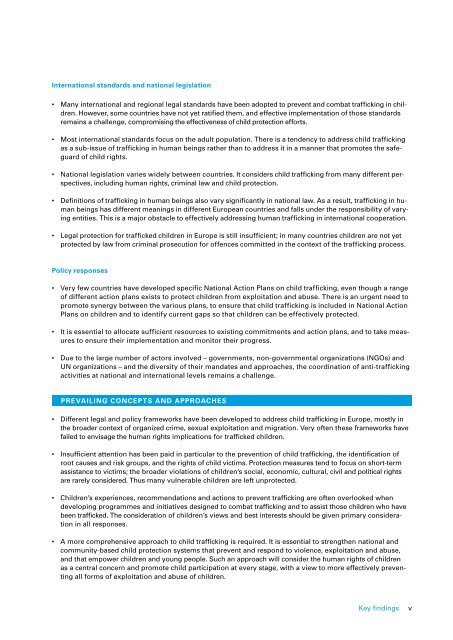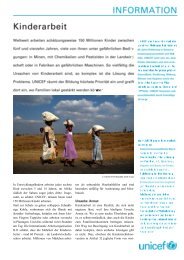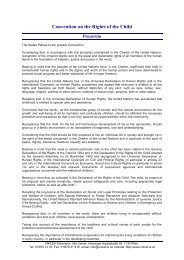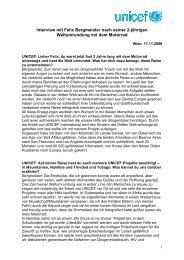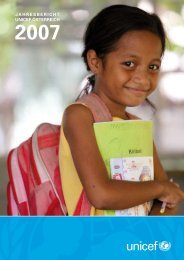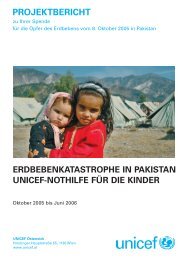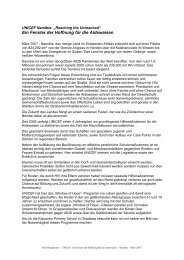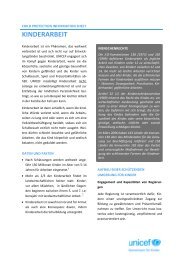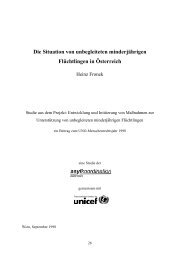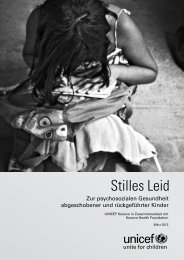Child Trafficking in Europe
Child Trafficking in Europe
Child Trafficking in Europe
You also want an ePaper? Increase the reach of your titles
YUMPU automatically turns print PDFs into web optimized ePapers that Google loves.
<strong>in</strong>ternational standards and national legislation<br />
• Many <strong>in</strong>ternational and regional legal standards have been adopted to prevent and combat traffick<strong>in</strong>g <strong>in</strong> children.<br />
However, some countries have not yet ratified them, and effective implementation of those standards<br />
rema<strong>in</strong>s a challenge, compromis<strong>in</strong>g the effectiveness of child protection efforts.<br />
• Most <strong>in</strong>ternational standards focus on the adult population. There is a tendency to address child traffick<strong>in</strong>g<br />
as a sub-issue of traffick<strong>in</strong>g <strong>in</strong> human be<strong>in</strong>gs rather than to address it <strong>in</strong> a manner that promotes the safeguard<br />
of child rights.<br />
• National legislation varies widely between countries. It considers child traffick<strong>in</strong>g from many different perspectives,<br />
<strong>in</strong>clud<strong>in</strong>g human rights, crim<strong>in</strong>al law and child protection.<br />
• Def<strong>in</strong>itions of traffick<strong>in</strong>g <strong>in</strong> human be<strong>in</strong>gs also vary significantly <strong>in</strong> national law. As a result, traffick<strong>in</strong>g <strong>in</strong> human<br />
be<strong>in</strong>gs has different mean<strong>in</strong>gs <strong>in</strong> different <strong>Europe</strong>an countries and falls under the responsibility of vary<strong>in</strong>g<br />
entities. This is a major obstacle to effectively address<strong>in</strong>g human traffick<strong>in</strong>g <strong>in</strong> <strong>in</strong>ternational cooperation.<br />
• Legal protection for trafficked children <strong>in</strong> <strong>Europe</strong> is still <strong>in</strong>sufficient; <strong>in</strong> many countries children are not yet<br />
protected by law from crim<strong>in</strong>al prosecution for offences committed <strong>in</strong> the context of the traffick<strong>in</strong>g process.<br />
policy responses<br />
• Very few countries have developed specific National Action Plans on child traffick<strong>in</strong>g, even though a range<br />
of different action plans exists to protect children from exploitation and abuse. There is an urgent need to<br />
promote synergy between the various plans, to ensure that child traffick<strong>in</strong>g is <strong>in</strong>cluded <strong>in</strong> National Action<br />
Plans on children and to identify current gaps so that children can be effectively protected.<br />
• It is essential to allocate sufficient resources to exist<strong>in</strong>g commitments and action plans, and to take measures<br />
to ensure their implementation and monitor their progress.<br />
• Due to the large number of actors <strong>in</strong>volved – governments, non-governmental organizations (NGOs) and<br />
UN organizations – and the diversity of their mandates and approaches, the coord<strong>in</strong>ation of anti-traffick<strong>in</strong>g<br />
activities at national and <strong>in</strong>ternational levels rema<strong>in</strong>s a challenge.<br />
prEVail<strong>in</strong>g ConCEpTs and approaChEs<br />
• Different legal and policy frameworks have been developed to address child traffick<strong>in</strong>g <strong>in</strong> <strong>Europe</strong>, mostly <strong>in</strong><br />
the broader context of organized crime, sexual exploitation and migration. Very often these frameworks have<br />
failed to envisage the human rights implications for trafficked children.<br />
• Insufficient attention has been paid <strong>in</strong> particular to the prevention of child traffick<strong>in</strong>g, the identification of<br />
root causes and risk groups, and the rights of child victims. Protection measures tend to focus on short-term<br />
assistance to victims; the broader violations of children’s social, economic, cultural, civil and political rights<br />
are rarely considered. Thus many vulnerable children are left unprotected.<br />
• <strong>Child</strong>ren’s experiences, recommendations and actions to prevent traffick<strong>in</strong>g are often overlooked when<br />
develop<strong>in</strong>g programmes and <strong>in</strong>itiatives designed to combat traffick<strong>in</strong>g and to assist those children who have<br />
been trafficked. The consideration of children’s views and best <strong>in</strong>terests should be given primary consideration<br />
<strong>in</strong> all responses.<br />
• A more comprehensive approach to child traffick<strong>in</strong>g is required. It is essential to strengthen national and<br />
community-based child protection systems that prevent and respond to violence, exploitation and abuse,<br />
and that empower children and young people. Such an approach will consider the human rights of children<br />
as a central concern and promote child participation at every stage, with a view to more effectively prevent<strong>in</strong>g<br />
all forms of exploitation and abuse of children.<br />
Key f<strong>in</strong>d<strong>in</strong>gs v


